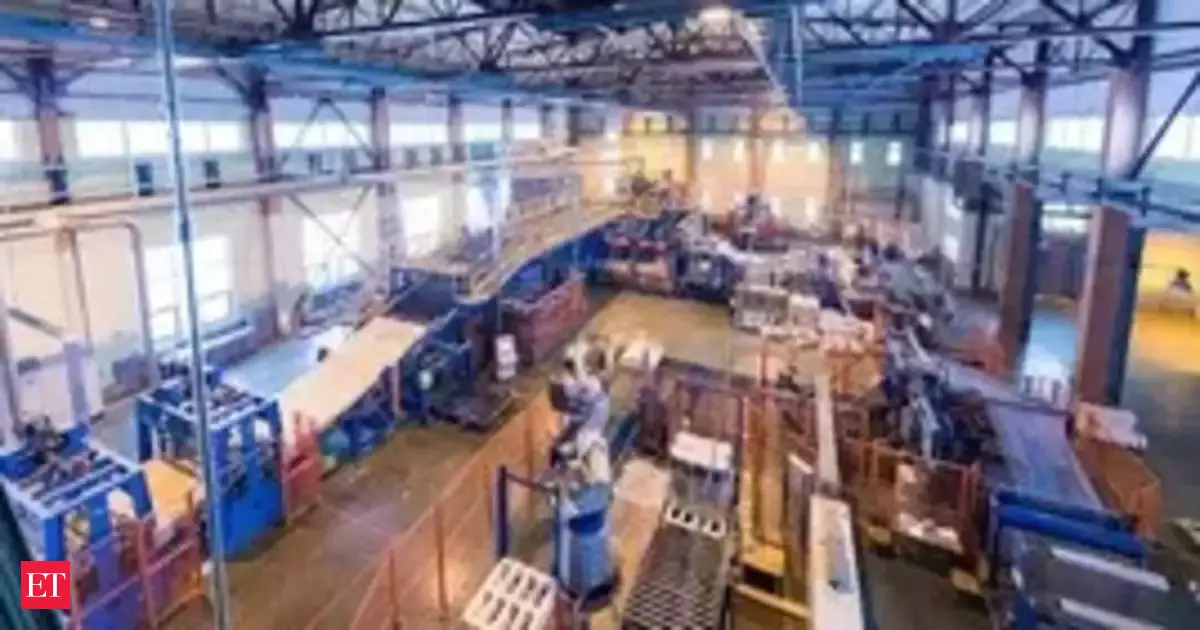By Faizan Haidar
IANSRepresentational Image
The Industrial and Warehousing real estate segment witnessed absorption of 34 million sq. ft. in the first half of 2025, reflecting a 24.5% year-on-year increase compared to the 27.3 million sq. ft. absorbed during the same period in 2024, according to Savills India, a global real estate advisory firm. Absorption was driven by a substantial contribution from the manufacturing segment and sustained demand from the 3PL segment, followed by the e-commerce, FMCG/FMCD and retail segments. Tier I cities accounted for 77% of total absorption, while Tier II & III cities took the remaining 23%, as per Savills India. On the supply side, the market witnessed fresh supply of 33.4million sq. ft., of which Tier I cities accounted for 27.3million sq. ft. (82%), while Tier II & III cities contributed 6.1million sq. ft. (18%). The market witnessed delivery of projects across cities in tandem with the growing demand. “India’s industrial and logistics sector is on track for significant expansion, with projected absorption expected to exceed 65 million sq. ft. in 2025. This growth is being driven by strong demand from the manufacturing sector and sustained momentum in third-party logistics (3PL) and retail,” said Srinivas N, Managing Director, Industrial and Logistics, Savills India.Live EventsTier-II and Tier-III cities are becoming integral to sourcing, consumption, and distribution networks, positioning themselves as the next frontiers for industrial and logistics development. The shift towards Grade A spaces is increasing, with share of demand rising from 39% in H1 2024 to 55% in H1 2025. Meanwhile, the share of Grade A supply grew from 49% to 58% during the same period. This growth is driven by a combination of demand and supply side factors, including a growing emphasis on ESG standards, quality and compliance. By the end of 2025, Grade A spaces are projected to account for over 60% of both total supply and absorption.The manufacturing sector witnessed a significant surge in activity, with its share of total space absorption rising from 22% in H1 2024 to 32% in H1 2025. This growth has been propelled by a series of Central and State-level incentive programmes, notably the Production Linked Incentive (PLI) Scheme, which continues to drive investments and expansion. In contrast, the 3PL segment saw its contribution decline from 33% in H1 2024 to 26% in H1 2025, primarily due to reduced supply chain outsourcing by FMCG and FMCD companies aiming to optimise operational costs.The e-commerce segment has almost doubled its contribution to overall absorption, increasing from 6% in H1 2024 to 11% in H1 2025 while the contribution of the FMCG/FMCD and retail segments stood at 11% and 7% respectively in H1 2025.Among the major cities in India, Delhi NCR led the pack with the highest absorption in H1 2025 at 19% followed by Pune and Mumbai each at 15%, and Bengaluru at 10%. Meanwhile,Tier II & III cities together accounted for 23% of overall absorption. In terms of supply, Delhi NCR accounted for the highest contribution at 18% in H1 2025, followed by Pune at 17%, Mumbai at 16%, and Tier II & III cities at 18% of the total supply.(You can now subscribe to our Economic Times WhatsApp channel)
Read More News onIndustrial and Warehousingreal estate segmentreal estateFMCGESG standardsProduction Linked Incentiveincentive programmesdelhi ncr
(Catch all the Business News, Breaking News, Budget 2025 Events and Latest News Updates on The Economic Times.) Subscribe to The Economic Times Prime and read the ET ePaper online….moreless
(You can now subscribe to our Economic Times WhatsApp channel)Read More News onIndustrial and Warehousingreal estate segmentreal estateFMCGESG standardsProduction Linked Incentiveincentive programmesdelhi ncr(Catch all the Business News, Breaking News, Budget 2025 Events and Latest News Updates on The Economic Times.) Subscribe to The Economic Times Prime and read the ET ePaper online….moreless
